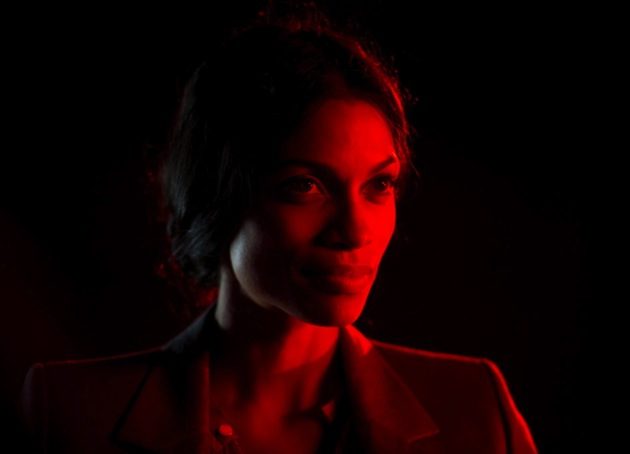REVIEW: Danny Boyle Plays Mind Games With Moviegoers In Beyond-Belief 'Trance'

“Everyone knows amnesia is bollocks,” snarls one of the thugs in Trance. Hypnotism, on the other hand, is fair game in this brash, beyond-belief psychothriller from director Danny Boyle, who seizes on a script co-written by Joe Ahearne and longtime Boyle collaborator John Hodge as a chance to play elaborate mind games with fans of his early work. A trippy variation on the dream-within-a-dream movie, Boyle’s return-to-form crimer constantly challenges what auds think they know, but neglects to establish why they should care. The pic’s flashy style, plus its stark violence and nudity, ought to transfix male genre auds.
More of a conceptual exercise than a conventional film noir, Trance demonstrates Boyle’s determination to continue to overcome seemingly impossible filmmaking challenges. After painting himself out of a physical corner with 127 Hours, the director now confronts a psychic obstacle in attempting to tell a complex genre movie from within the confines of one person’s consciousness — even as others noodle with the same character’s subconscious.
A charismatic, yet miscast James McAvoy plays the mark, a clean-scrubbed auction-house employee named Simon who snaps into action during the attempted theft of a Goya painting. Back in the day, all it took was a bit of muscle and some nerve to rob art from auction, Simon explains in a stretch of Scottish-lilted, direct-address narration that not only recalls Hodge’s earlier scripts (Shallow Grave, Trainspotting), but suggests a younger, softer-edged Ewan McGregor.
To whom is Simon speaking: The audience? A hypnotist? The cops? Doesn’t matter. The film takes place mostly in Simon’s head, so it’s his experience auds see unfolding. After establishing how staff have been trained to protect the auction-house assets in the prologue, Simon springs the pic’s first twist: He was the caper’s inside man. Problem is, after removing the Goya from its frame, he sustained a blow to the head, and the crucial memory of where he stashed the painting is beyond his reach.
Torture doesn’t work to bring it back, so underworld tough guy Franck (Vincent Cassel, terrifically unpredictable) suggests hypnotism, allowing Simon to pick his own mesmerist. He opts for Elizabeth Lamb, played by Rosario Dawson, whose sultry power over men makes plausible how easily her character manages to put Simon under. While neither the film nor its goons puts any stock in amnesia, both encourage a willing suspension of disbelief when it comes to far more elaborate feats of mind-control.
In that respect, Boyle seems to be asking whether he too can play the hypnotist. Using dynamic, visual storytelling, slick cutting and a propulsive electronic score, can he successfully convince rational auds to buy into an increasingly far-fetched story? The stunt works for a time. On Simon’s second session with Elizabeth, she pounces, demanding to see the men who put him up to this — and offering her services for a share in the prize, should they find the painting.
It’s at this point in the film that things start to get really weird, as the narrative starts to fold back on itself, blurring the lines between reality and the hypothetical. Each time Elizabeth puts Simon in trance, she takes him to a new location in his mind, making it increasingly difficult for auds to tell fantasy from memory from lived experience. As Simon’s sense of danger grows, these scenes become more fragmented and violent, which allows the pic to introduce and instantly erase shocking homicidal behavior, but puts a strain on McAvoy, who seems too nice to harbor such demons.
Boyle has cited Nicolas Roeg as an influence on the film’s disorienting style, and sure enough, Trance shares the jagged subjectivity of Performance and Don’t Look Now, along with the director’s raw treatment of anger and arousal. The deeper things go, the kinkier they get, as Elizabeth finds herself seducing both Franck and Simon — but are these fantasies real or projections of their jealous imaginations? They’re certainly real enough for audiences, who won’t soon forget the sight of a denuded Dawson, or the erotic art history lesson that explains her carefully sculpted appearance.
Superficial pleasures aside, however, the convoluted script jumps and dodges so often, it soon loses the thread of its own story. This isn’t Inception, where layers of experience are nested neatly one inside the next, but rather a frittata, its ingredients distinguishable only by the various hyper-saturated colors that seem to define each scene.
The lost painting is just the first of multiple MacGuffins, after which Simon’s missing memory becomes the thing they all so desperately need to recover. And then, quite abruptly, Simon finds himself on the margins, and Elizabeth takes centerstage — an opportunity for which Dawson proves more than ready — leading to a succession of reversals that seem a bit too dependent on enormous gaps in logic only half-excused by the pic’s record-skip storytelling style.
With all its trickery, the film presents a sexy distraction, but proves a mind is a terrible thing to waste.
More on Trance:

Comments
She's so hot. God I can't wait for this.
Is "auds" a thing?